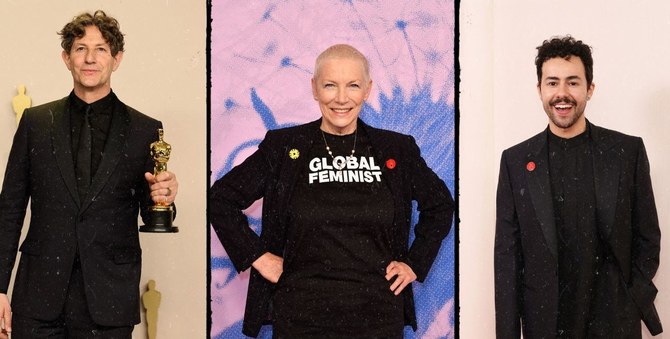DUBAI: Cinema for Gaza, which was launched by a group of female filmmakers and film journalists, has raised $316,778 to support the UK charity Medical Aid for Palestinians through a celebrity auction, according to The Hollywood Reporter.
The auction featured donations from Tilda Swinton, Annie Lennox, Joaquin Phoenix, Spike Lee and Guillermo del Toro among others.
Lennox’s handwritten lyrics to her Eurythmics hit “Sweet Dreams” was the top seller, with a bidder paying $26,222 for the item.
Meanwhile, “The Zone of Interest” director Jonathan Glazer, who received criticism online for referencing the Gaza conflict in his 2024 Oscars acceptance speech, donated seven posters from the film, signed by himself, composer Mica Levi and producer James Wilson, as well as a selection of posters for his 2014 feature “Under the Skin,” which collectively raised $13,702.
US-Egyptian comedian and creator Ramy Youssef donated tickets to his live show as well as to the afterparty and a meet-and-greet. Oscar-winner Phoenix donated a signed “Joker” poster. Del Toro contributed six signed books. Lee contributed a signed, framed poster of Malcolm X.
“We thought we might raise maybe £20,000 ($25,000),” said London-based film journalist and critic Hanna Flint to The Hollywood Reporter.
Flint set up Cinema for Gaza together with her film-industry friends Hannah Farr, Julia Jackman, Leila Latif, Sophie Monks Kaufman, and Helen Simmons a few months after the start of Israel’s ongoing military assault on Gaza.
“We’re a very diverse group of women, we’ve got women of color, we’ve got Jewish women, Muslim women, Christians, atheists, who all came together out of this need to do something tangible to show our support and activism for the humanitarian crisis that’s going on (in Gaza),” said Flint.
“We really believe that cinema can be a powerful tool, a political tool, to speak about the world, to reflect and engage with what’s going on, and, we thought, what better way (to get) people in our industry to come together to try and help people who are not doing that well?”






















